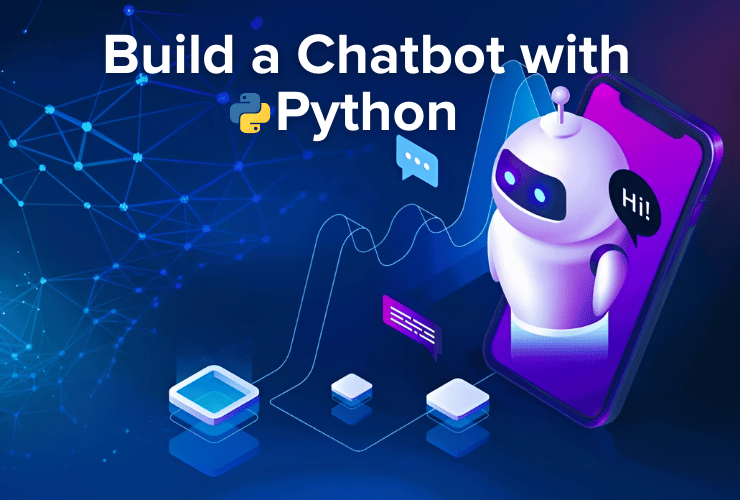Introduction
Artificial Intelligence (AI) is transforming our world, and getting kids familiar with it early on can set them up for success in the future. However, introducing AI doesn’t have to be overwhelming. With the right approach, learning about AI can be fun, interactive, and easy to grasp. Here’s how you can guide your kids or students into the exciting world of AI in a way that sparks curiosity and creativity.
What are the easy ways to teach AI to kids?
1. Use Entertainment as a Gateway to AI

Watch AI-Themed Movies
Movies like Wall-E offer a great starting point to discuss the concept of AI. After watching the film, explore questions like:
- How does Wall-E make decisions?
- Can robots really feel emotions like humans?
This opens the door for a deeper conversation about how AI is depicted in the media and its real-world implications.
Play AI-Powered Games
Kids love video games, many of which integrate AI in clever ways. Look for games with adaptive difficulty levels or AI-driven characters. Highlight how AI in these games learns and adapts to players’ actions, making the gaming experience more engaging and dynamic. This shows kids the practical, fun side of AI in their favorite activities.
2. Hands-On Activities with Coding
Codingal’s Coding Courses for Kids
Platforms like Scratch, Scratch Jr., and Thunkable offer fantastic, beginner-friendly ways for kids to dive into AI. Here are a few examples:
- Build a Chatbot: Let kids create simple chatbots in Scratch that respond to user inputs, helping them understand how AI can simulate conversations.
- Create an AI App: With Thunkable, kids can design an app that incorporates basic AI features, such as voice or image recognition, introducing them to machine learning in a playful manner.
Google’s Teachable Machine
Google’s Teachable Machine is an amazing, no-code tool that lets kids train their own AI models. Whether it’s recognizing images, sounds, or poses, children can experiment with machine learning without needing to write any code. This easy-to-use platform offers a practical way for kids to understand how AI works.
Cognimates
Cognimates provides tools for kids to create games, control robots, and even build their own machine learning models. The platform’s intuitive interface helps kids understand complex concepts through creative activities.
3. Highlight AI in Everyday Life
AI in Devices
Explain how everyday AI-powered devices, such as voice assistants (like Alexa or Siri), make life easier. Ask kids to interact with these devices and identify what makes them “smart.”
- How do voice assistants understand our commands?
- What kind of tasks can they perform?
AI in Daily Experiences
Encourage kids to look for AI around them, from personalized recommendations on Netflix or YouTube to facial recognition on smartphones. This helps kids realize that AI is not just a futuristic concept—it’s part of their everyday life.
4. Encourage Creative AI Projects
AI in Art and Music
AI tools like DeepDream and Amper Music let kids create unique digital artwork and original music. By exploring the creative side of AI, children can see how technology can amplify their artistic expression.
Robotics Fun
Introduce kids to educational robots like Dash or LEGO Mindstorms. These robots can be programmed to complete tasks or react to stimuli, encouraging problem-solving, creativity, and collaboration. Through these hands-on experiences, kids will gain a deeper understanding of how robots and AI systems function.
5. Foster Critical Thinking About AI
Explain AI Algorithms
To explain algorithms in simple terms, use relatable analogies, like comparing them to recipes. For example:
- A cake recipe is like an algorithm for baking.
- Similarly, AI algorithms are a set of instructions that help computers make decisions.
Discuss AI’s Role in Society
Encourage kids to think critically about AI’s impact. Ask thought-provoking questions such as:
- How might AI affect jobs in the future?
- What ethical issues arise from the use of AI?
Resources to Explore
- Codingal
Codingal offers AI-focused coding courses tailored for kids, with interactive lessons and hands-on projects to make learning AI both fun and educational. - AI4K12 Initiative
This initiative provides structured lesson plans that break down AI concepts into five “big ideas,” making it accessible for students at various grade levels. - Google’s Teachable Machine
A fantastic tool for beginners, Teachable Machine allows kids to explore AI concepts through simple, no-code activities. - Scratch with AI Extensions
Kids familiar with Scratch can use AI extensions to create interactive games or stories that respond to voice commands or image recognition, making coding even more dynamic.
FAQs About Teaching AI to Kids
What is AI for kids?
AI is when computers perform tasks that usually require human intelligence, like recognizing patterns, understanding language, or playing games.
At what age can kids start learning AI?
Kids as young as 7-8 years old can begin exploring simple AI concepts through coding games and interactive tools.
How do I explain AI to a 5-year-old?
You can explain AI as a “smart toy” that learns and improves over time, just like a pet that learns new tricks.
Can AI teach kids to read?
Yes! Many AI-based tools are designed to help kids with reading, providing interactive tasks and personalized feedback to improve their skills.
Can kids self-learn AI?
Absolutely! With the abundance of online resources, tutorials, and platforms, kids can learn AI independently and at their own pace.
Conclusion
Introducing kids to AI through engaging activities and real-world examples is not only possible, but it can be incredibly rewarding. By leveraging tools like Codingal, Google’s Teachable Machine, and Scratch, parents and educators can make AI an exciting, hands-on adventure. These experiences foster creativity, problem-solving, and critical thinking skills—preparing kids for a future where AI will play a pivotal role.
Let’s inspire the next generation to become not just consumers of AI, but innovators who shape its future. Happy learning!











